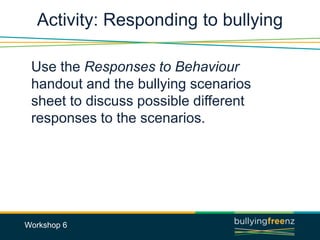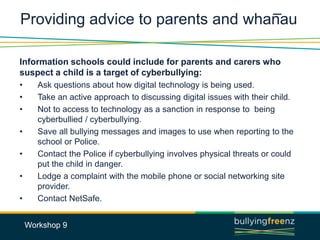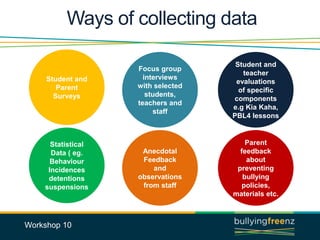The document provides information about bullying prevention workshops for schools. It includes definitions of bullying, types of bullying, roles of students in bullying situations, strategies for preventing and responding to bullying, integrating bullying prevention into the curriculum, cyberbullying, working with parents and collecting data. The workshops aim to support schools in developing policies and strategies to address bullying through staff professional development activities.
































